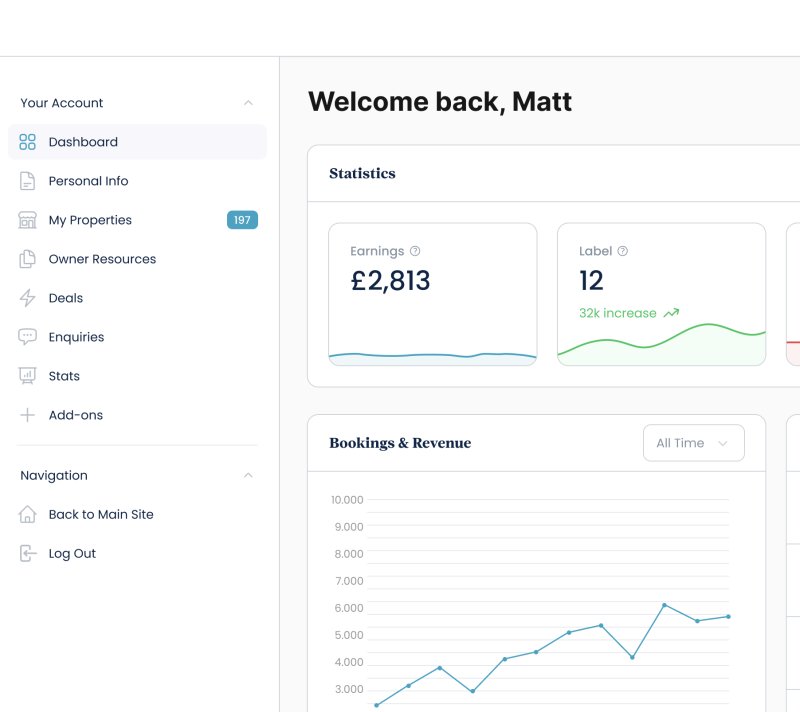Blogs /
Does your website speak your customers’ language?
The online world brings us together and is now a place where content can be accessed from anywhere, at the touch of a button. Businesses are constantly seeking ways to expand their reach and cater to a diverse audience.
One pivotal aspect of achieving this goal is to have a multilingual website that can communicate effectively with users from various linguistic backgrounds.
Below we explore the benefits of a multilingual website:
What is a multilingual website?
Essentially its a website offering content in multiple languages, enabling users to access and interact with the site in their preferred language. The default language of most websites is English, however, a significant portion of the world’s population do not speak English as their first language, which can lead to communication barriers and hinder user experience.
Expanding global reach
In the digital era, the effectiveness of your website in engaging potential customers is more important than ever. Your website is often a customer’s first point of contact with your business. So getting this right is critical when it comes to not only securing sales, but also building long standing relationships with your customers, and developing a high degree of brand loyalty.
It goes without saying that a website must be attractive and user-friendly, but personalisation is also playing an increasingly more important role in enhancing customer experience.
A multilingual website is a powerful tool that allows businesses to better engage with international users by offering content in their native languages. It can help to improve user journeys, enhance Search Engine Optimisation (SEO), and widen your online visibility. Expanding to new global markets demonstrates your commitment to providing a tailored experience for your users, which can boost your credibility and build trust across your audience.
Improve conversion rates
Although 51.7% of web content is in English, you also don’t want to miss out on the other 48.3% that could bring you business.
Even if your audience could speak English, research shows 65% are more likely to convert when reading product pages in their native language, and 40% wouldn’t even buy from websites in other languages.
By having a multilingual website, foreign consumers who visit your site are less likely to exit immediately upon discovering that it’s not available in their native language.
Competitive advantage
For similar reasons as noted above and in an economically precarious period, now more than ever businesses need to differentiate themselves to gain an advantage over their competitors.
Attracting more visitors to your website means increased awareness of your brand in general. By being inclusive of varied linguistic needs, you can elevate your brand and set you apart from competitors.
With having your website available in multiple languages, it shows you are operating a global business. Prospective customers will subconsciously assume your brand is more complex, elaborate and sophisticated than your competitors. Consequently, this will naturally help boost cross border e-commerce sales and portray quality and professionalism.
Enhanced SEO
One of the primary objectives of any website is to rank highly in search engine results to drive organic traffic. By offering multilingual content, you can improve your website’s SEO and enhance your online visibility.
Search engines like Google rank websites higher if they provide content in the user’s preferred language – a signal of relevance and quality.
You may be fully up to speed on SEO and nailing it on a domestic level. However, how do you rank when trying to attract foreign customers and those who browse in different languages?
The key is to not only translate your website’s content but also to have it indexed on SERPs meaning that you’ve optimised it all for international SEO. This includes having 100% of your site content translated including any metadata. It also entails having unique URLs with language specific subdomains or subdirectories.
Making your site multilingual
Creating a successful multilingual website involves translating your content into many different languages, and achieving the desired outcome isn’t always a walk in the park. It requires a combination of tools, technologies, and strategies to manage, display, and optimise content for users from a range of linguistic backgrounds.
Choosing an appropriate Content Management System (CMS) such as WordPress that supports multiple languages is the first place to start. Whilst WordPress doesn’t provide multilingual support out of the box, there are a number of WordPress plugins available that can. At Yellow Peach we recommend WPML as our multilingual plugin of choice as it offers a centralised interface for efficiently managing translations.
To provide a seamless user experience on multilingual websites, your site should automatically detect and display content in the user’s preferred language. This can be achieved through various techniques, such as browser language settings, geolocation, and cookies. However, relying on automated tools such as Google Translate can produce translations that can be inaccurate, awkward, or culturally insensitive in specific contexts. Poor translation quality can significantly impact your website’s credibility and user engagement so it is worth considering investing in professional language services.
Conclusion
A multilingual website is essential for any business looking to expand its global reach, improve user experience, and enhance its online visibility. By catering to the diverse linguistic needs of your target audience, you can effectively engage with international visitors, foster trust and credibility, and ultimately drive more traffic, conversions, and revenue for your business.
To create an impressive multilingual website, following best practices such as using language specific domains and subdomains, designing for right-to-left languages, and providing user friendly language switching options, is crucial. By doing so, you can ensure a seamless user experience across different languages.
Similarly avoiding common mistakes, such as poor translation quality, inconsistent navigation, and insufficient localisation, are vital to building a successful multilingual website that caters to diverse audiences.
And finally, the process of creating and maintaining a multilingual website is an ongoing one. As languages evolve and your target audience expands, keeping your website up-to-date and relevant is an absolute must.













